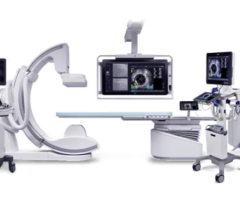
June 25, 2012 — The first 10 cardiac catheterization laboratories to undergo review by Accreditation for Cardiovascular Excellence (ACE) all welcomed the evaluation by outside experts. Still, review teams found insufficiencies in record-keeping and other quality metrics at well-run medical centers, according to two studies presented at the recent Society for Cardiovascular Angiography and Interventions (SCAI) 2012 Scientific Sessions.
Among the shortcomings found by the ACE review teams were medical records missing key clinical information, cardiac catheterization reports lacking data needed to determine patient risk and inconsistent use of random case reviews as a tool for ensuring quality and appropriateness. A significant amount of variation in documentation among sites was also seen during these reviews.
ACE accredits facilities that perform invasive cardiovascular procedures such as cardiac catheterization and percutaneous coronary intervention (PCI). The nonprofit organization, which was launched in May 2009 with support from SCAI and the American College of Cardiology Foundation, issued its first accreditation in May 2011.
As reported in the first study presented at SCAI, investigators gathered data on quality processes from the first 10 medical centers to undergo ACE review. They examined a total of 441 medical records from patients who underwent cardiac catheterization, PCI or both.
In the study, more than 93 percent of charts earned good marks for the completeness of most clinical data. However, certain areas needed improvement. Radiation exposure was documented in only 87 percent, and a combination of X-ray exposure time and absorbed radiation dose in 77.5 percent.
In addition, information on the severity of chest pain (angina class) was present in 28 percent of records, the extent of the risk associated with the patient’s coronary artery disease based on stress testing was stated in 8 percent and the patient’s functional status (New York Heart Association class) was stated in 21.8 percent of records. Other clinical information needed by the National Cardiovascular Data Registry (NCDR) to assess the risk of patients treated with PCI was missing from many records, making it difficult for reviewers to validate the accuracy of the data submitted to the database.
For the second study presented at SCAI 2012, physician reviewers from ACE examined 478 randomly selected angiograms and the accompanying cath reports from the same 10 facilities. They found that the results of PCI were adequate in 89 percent of cases. However, cath reports often contained insufficient or unclear information on patient risk and the appropriateness of PCI. For example, evidence that the patient’s heart muscle was not getting enough blood and oxygen (ischemia) was documented in only 46 percent of patients. About 8 percent of patients had intravascular ultrasound or another test to determine whether PCI was needed, but half of these studies were inadequate or indeterminate, and documentation was poor.
Overall, only 66 percent of non-urgent PCIs could be deemed appropriate based on the angiogram and information available in the cath report. In 26 percent of cases the appropriateness of PCI was considered uncertain primarily because of the limited documentation, while 8 percent of procedures were deemed inappropriate.
For more information: www.scai.org


 December 20, 2023
December 20, 2023 








